A simple, mostly traditional mushroom goulash has been in the works for years. I'm excited to finally share it with you.
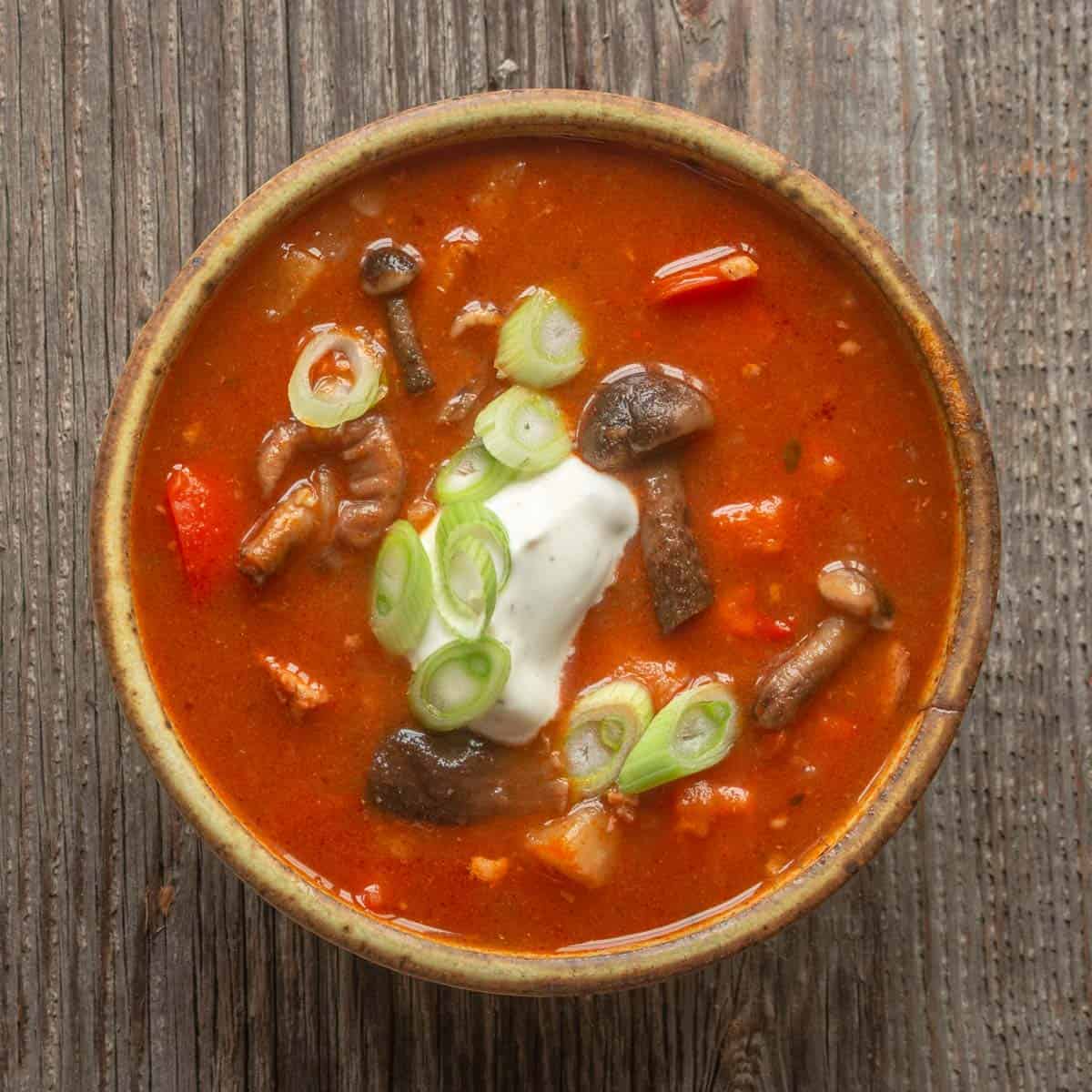
I know I'll get some comments about my creative liberties here. This is based directly off a family recipe for Hungarian Goulash from my friend from Hungary. My only additions are venison shoulder instead of ground beef and honey mushrooms because they're an ingredient enjoyed in the region.
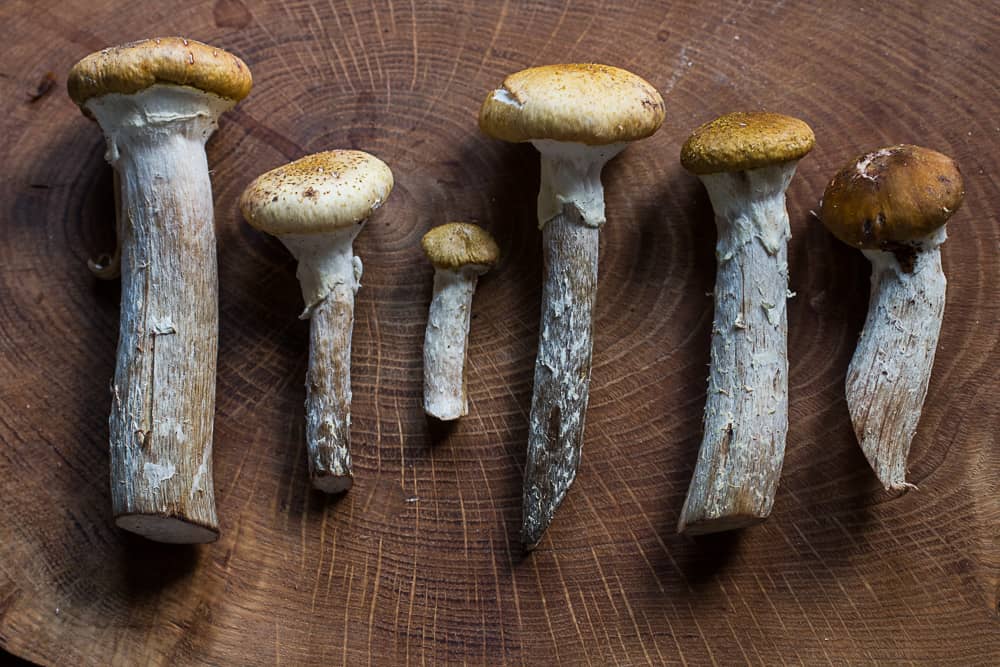
What a goulash or gulyas is, like so many recipes with deep cultural connections, is a little open for debate and interpretation. Some like it thick, some like it thin, some like it sparse, others loaded with vegetables.
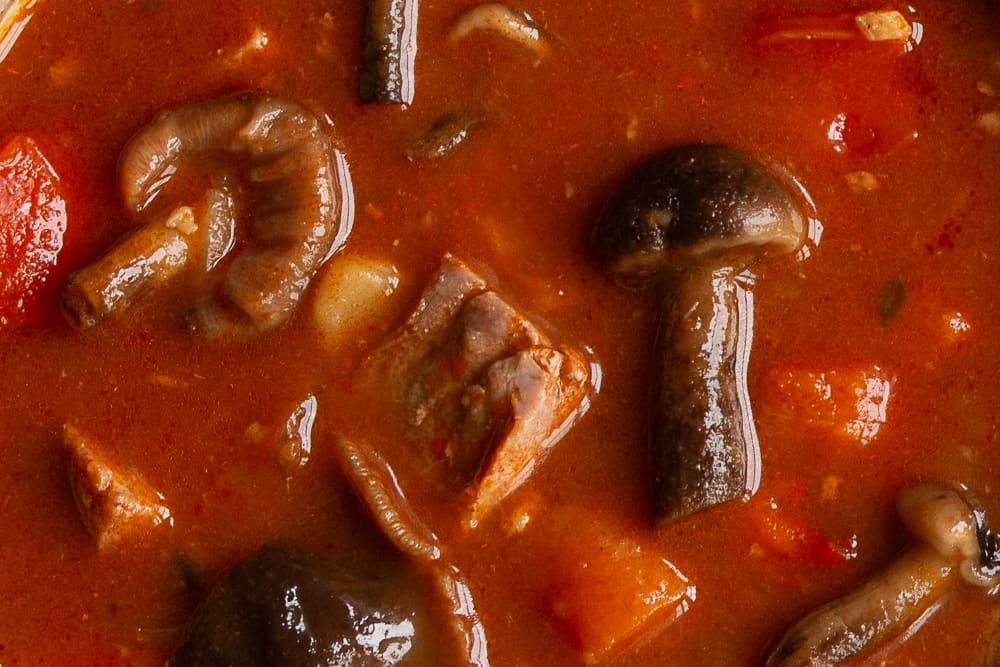
Ingredient History
One thing that's interesting about gulyas is that it's a traditional recipe in Eastern Europe and Hungary, but it's made from mostly new world ingredients. This places it in the form we know, it around a couple hundred years old.
The key ingredients here: peppers, potatoes, tomatoes, and paprika are all ingredients from the Americas. They were probably added to a simple stew of meat and roots like carrot, celery root or parsley root scented with aromatic seeds like caraway.
As an aside, potatoes seem to be debatable. Millet was probably the first starch that was added to bulk out the soup.
Soup vs stew
Honey mushrooms are the big addition here, and this recipe is chockful of them, a generous amount of 6-8 oz, depending on your harvest. Honey mushrooms are enjoyed in Eastern Europe, and they are the perfect candidate here.
Besides adding some good texture honeys are perfect for soup because they need long cooking. They also help thicken the soup.
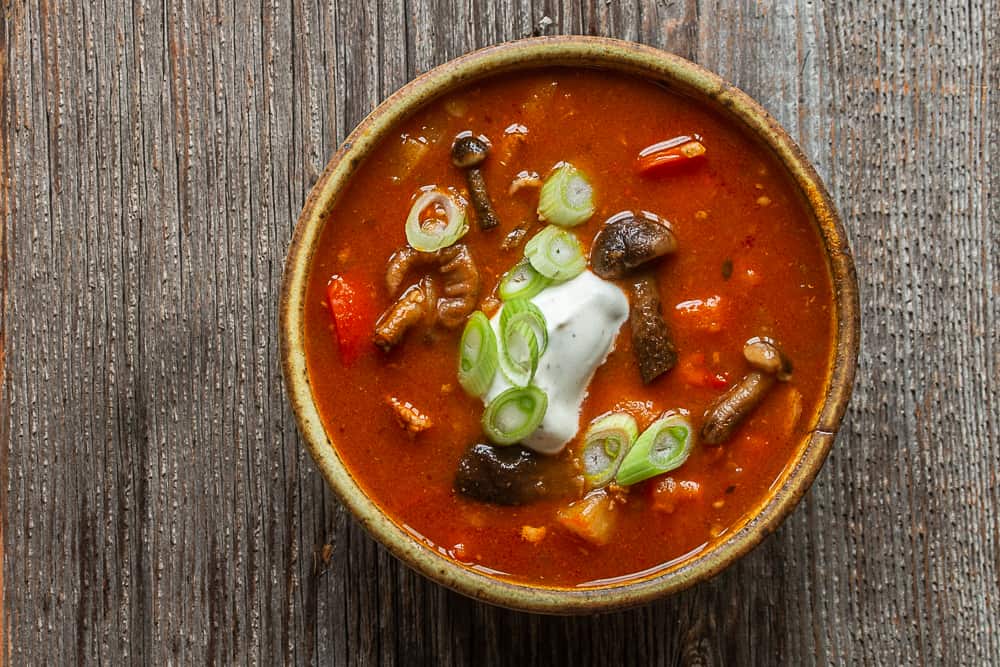
Substitutions
Honey mushrooms are the best, but a combination of others can be nice too. Dried porcini mushrooms can add great flavor. Oyster mushrooms or shiitakes can add a nice texture if you don't have honey mushrooms.
For the meat, you can use any slow cooking cut you have. Beef chuck and pork shoulder work well.
Honey Mushroom Goulash or Gulyas
Ingredients
Stew
- 2 lbs venison pork, or beef shoulder, cut into stew chunks
- Kosher salt and fresh ground black pepper
- 4 tablespoons bacon grease or lard
- 2 tablespoons sweet paprika
- 1 tablespoon smoked paprika
- ¼ cup tomato paste
- 8 oz 1 large yellow onion ½ inch dice
- 8 oz 1 large russet potato* peeled, 1 inch dice
- 6 oz 1 medium celery root or parsley root (optional, additional potato can be substituted) 1 inch dice
- 8 oz Hungarian wax peppers* or 2 large bell peppers, any color but green, 1 inch dice
- 6 oz 1 medium carrot, 1 inch dice
- ¼ cup dry red wine
- 6 oz fresh young honey mushrooms young buttons left whole, large mushrooms quartered*
- 2 large cloves garlic
- 6 cups meat stock or water
- 1 teaspoon chopped fresh thyme or a pinch of dried thyme
- 2 dried bay leaves
Finishing
- 8 oz Sour cream
- 2 tablespoons heavy cream or 1 tablespoon milk
- Ground caraway to taste
- Sliced green onions
Instructions
- Cut the meat into 1 inch pieces. Season with salt and pepper and spread out on a tray or cookie sheet. Refrigerate the meat overnight or for at least 20 minutes to dry it out and improve browning.
- Heat the grease in a soup pot, then brown the meat well. Add the onions, stir, and cook for a minute. Add the vegetables and cook until lightly browned. Add the tomato paste and paprika and cook a few minutes more.
- In a separate pan, saute the mushrooms in a dry pan on medium-high heat until golden brown and cooked through.
- Grate the garlic directly into the pot or mince it. Add the wine. Add mushrooms, stock and herbs. Bring to a boil, turn the heat to low and cook, covered for 45 minutes, or until the meat is tender.
- Cool the stew and reserve.
- For the caraway sour cream garnish, mix the sour cream with the caraway, cream and a pinch of salt and reserve. Garnish the stew with fresh sliced green onions and a dollop of the sour cream.
Notes
Hungarian wax peppers can be spicy. If you are at all sensitive to heat you will want to use bell peppers. Honey mushroom stems can be used here, but only use the tender portions or a few inches under the cap. Tough honey stems can make good broth or duxelles.
More
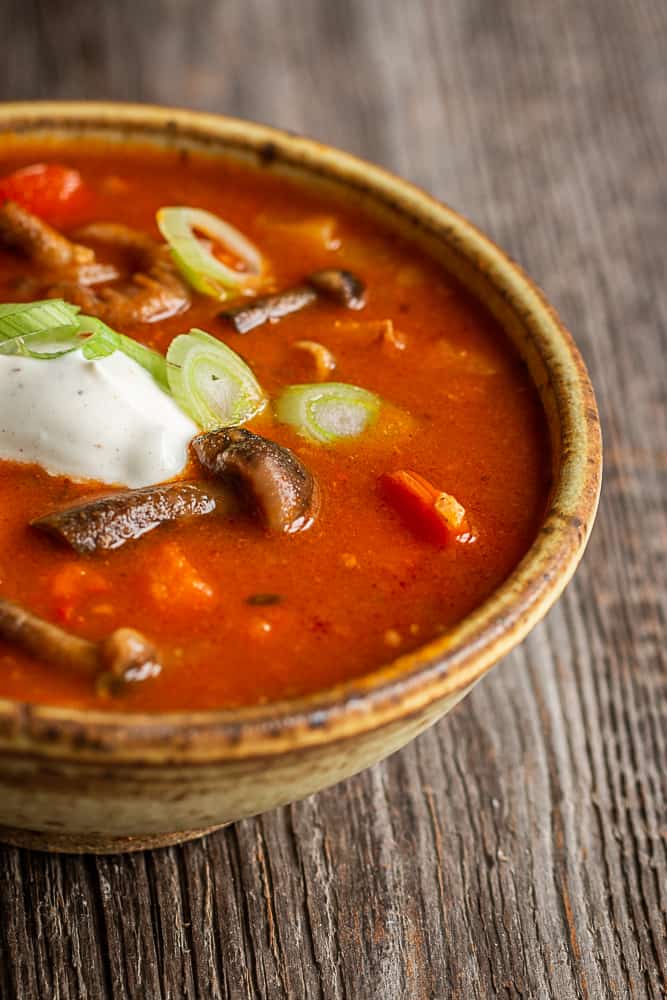


Rob
Very untested in trying this out! If the honeys are dried, how would you adjust? Thanks!
Alan Bergo
Add a handful of dried ones to the pot while it's cooking, assuming they're very clean. Adjust the liquid as needed.
Jacqui
The honeys here just flushed this week, fast and furious as always, so, luckily I missed a lot that were already past prime when I noticed them. I have rather little self restraint and might have brought home way more than I could have processed if they had all been at the perfect stage.
Also, I am trying to get my freezer under control, so I made this with a tonne of honeys to complement the last bag of dromedary that has been lurking there since my last trip to Tunisia, and a big jar of frozen roe deer stock and meat scraps. I'm not sure it's legal to mix camelids with cervids, but there you have it.
And it was great. Thanks so much for the recipe!
Tim T
I made this delicious recipe today and several times before. Venison was gone so I used equal parts pork and beef cut into stew meat. Used about 10 oz. of pre-cooked and frozen honey mushrooms. Thanks for sharing your recipes. T
Alan Bergo
Thanks T. You can use lots of combinations of meat and mushrooms but the honeys make it special. Thanks for commenting.